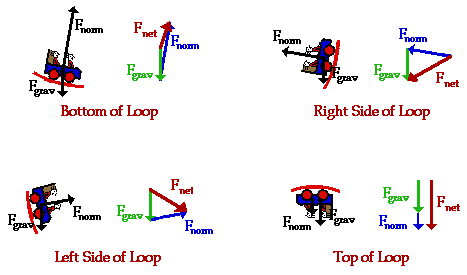Just a basic question. I was looking over some rollercoaster physics problems and trying to determine the FN after you determine the net force. So, at the bottom of the coaster, the Fgrav force is pushing down on the object and the FN forces are pushing up. Does this mean that Fnet= negativeFgrav+FN??? The reason I'm confused is that I looked at two different examples outlining this concept and one of them had that, but the other had Fnet=Fgrav+FN so now I'm really confused. Would you account for the fact that they are opposing forces like that and, essentially, end up with Fnet+Fgrav=FN OR would it be Fnet-Fgrav=FN.
Thanks!
Thanks!


